August 2016
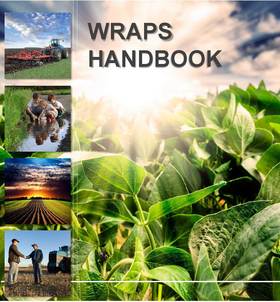 The Minnesota Soybean Research and Promotion Council has published a handbook for farmers about the Watershed Restoration and Protection Strategy program. Water quality is a major concern in Minnesota. The state has 80 major watersheds and is developing WRAPS for all of those major watersheds with the goal of water quality standards that meet total maximum daily loads of pollutants in Minnesota waters.
Farmers have a big role to play in how the WRAPS process plays out, but the process can be overwhelming and at times intimidating. That’s why the Minnesota Soybean Research & Promotion Council worked with Houston Engineering Inc. to develop a handbook to guide WRAPS participants through the process. "Everything you need to know in one convenient place. Now that’s using your bean." WRAPS Handbook.
Back to top
|
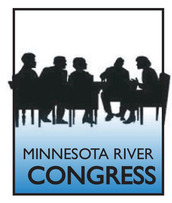 The Minnesota River Congress will be hosting meetings in six communities to inventory policies among the scores of groups and individuals working for the economic and natural resource health of the river basin. This will guide the Congress as it develops a public statement of policies and actions. “We are asking everyone interested to attend one of six meetings in the Minnesota Basin and submit those items you feel are appropriate for inclusion in our final statement and agenda,” says Scott Sparlin, Congress facilitator. The following meetings will start at 7 p.m.:
- Tuesday, Aug. 23, Fairmont: Knights of Columbus Hall, 920 East 10th St.
- Tuesday, Sept. 6, Mankato: Good Council Academy, 170 Good Council Dr., Room 005.
- Tuesday, Sept. 13, New Auburn: New Auburn City Hall 8303 8th Ave.
- Wednesday, Sept. 14, Bloomington: Minnesota Valley Chapter of the Izaak Walton League, 6601 Auto Club Road.
- Tuesday, Sep. 20, Granite Falls: Granite Falls Lutheran Church, 350 9th Ave.
- Thursday, Sept 22, Morton: Jackpot Junction 39375 Co. Rd. 24, 2nd floor ballroom.
The eventual Congress public policy statement and agenda will be approved at the seventh full Minnesota River congress meeting Thursday, Nov. 17. The location will be announced later. “We need everyone’s help to build the Congress policy and agenda,” says Sparlin. “Please submit items that have a basin-wide and significant impact. Items that call for specific and measurable action by the Minnesota River Congress. And please submit items that include background information supporting the policy you are advocating.” submit your resolutions electronically via email by Sept. 10 to, sesparlin@gmail.com.
Back to top
|
 The second stop for the Smithsonian Water/Ways exhibit opened Aug. 13 at the Nicollet County Historical Society and runs through Sept. 25. The exhibit at the Treaty Site History Center also includes exhibits about water on loan from the Minnesota Pollution Control Agency and the Minnesota Department of Health. Weekly events will feature documentaries about water, paddles on the Minnesota River and Swan Lake, tours of local water treatment plants, water chakra yoga classes and more. Community partners include the Department of Natural Resources, the Arts Center of St. Peter, and Gustavus Adolphus College.
Back to top
|
 Eco Experience at the Minnesota State Fair is
going big this year with a Paul Bunyan exhibit to call attention a giant sized
waste problem. Minnesotans throw away nearly 12 grocery carts of clothing and
textiles every MINUTE. Check it out, along with other interactive displays,
during the 12 days of the Minnesota State Fair: Aug. 25 - Sept. 5, daily
from 9 a.m. to 9 p.m. It's the MPCA’s premier outreach opportunity, and
this year offers many new exhibits including:
- A
living greenwall more than 14-feet long created by the University of
Wisconsin-River Falls highlights study findings that show foliage can
positively impact college students’ wellbeing and academic performance.
- The
elegant, solar-powered “Getaway Tiny House” features a lofted sleeping and
seating area.
- Turn
the pages and take a photo of a 7-foot pop-up book. Catch a story on
reuse, recycle and repair.
A partnership between
the Minnesota State Fair, the MPCA, and more than 150 organizations and
businesses across the state, the Eco Experience has become the second most
visited exhibit at the fair. The Eco Experience is the largest environmental
event of its kind, nationally, in the last two decades. In 2013 the Eco
Experience won the People’s Choice Award voted on by the fair goers at the
Minnesota State Fair. Since 2006, more than 3.2 million visitors have attended
the 25,000-square-foot exhibit to learn more about clean air and water, saving
energy, climate change, recycling, healthy local food, gardening, transportation,
green building and remodeling, and other ways to lead more eco-friendly lives.
Back to top
|
The Yellow Medicine SWCD will be hosting for information meetings on the new buffer law:
- Aug. 30: Canby Community Center, 2-4 p.m.
- Aug. 31: Granite Falls Kilowatt Community Center, 9-11 a.m.
- Aug. 31: Clarkfield City Hall/Old Fire Hall,1-3 p.m.
Presentations will be given by: Tyler Knutson, SWCD Technician - Buffer Law; Chris Balfany, County Ditch Inspector - Buffer Law in regards to county ditches/redeterminations; Liz Ludwig, FSA - Buffer Law in regards to Continuous Conservation Reserve program (CCRP)
If you cannot attend and would like more information on the new Buffer Law, please call Tyler Knutson at the Yellow Medicine SWCD office at 320-669-442 x3 or stop by the office.
Back to top
The Renville County SWCD, Renville County Water Management,
and Hawk Creek Watershed Project are hosting a cover crop field day Friday,
Sept. 23. Registration will be 8:30-9 a.m., and demonstrations 9-11:30 a.m. The field is located ¼-mile north of 85432 120th
St., Granite Falls. Demonstrations include: Rainfall simulator, cover crop plants and test plot results with Holly Hatlewick from the Renville SWCD; and soil pits and tillage with Jodi DeJong-Hughes from the University of
Minnesota Extension. Local cover crop seed vendor and applicator
information will be available. For a map of the field day site location
and more information, contact the Hawk Creek Watershed Project, 320-523-3666, or the Renville County SWCD, 320-523-1559.
Back to top
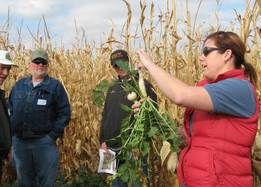 WEST
LAFAYETTE, Indiana (July 28, 2016)—Insight from 2,020 farmers from across the
country reflected enthusiasm for cover crops and—for the fourth year in a
row—found a yield boost in corn and soybeans following cover crops. Multi-year
data from the survey shows the yield boost increases as cover crops are planted
year after year, a revelation that points to an appealing long-term benefit of
the conservation practice. The survey offers data unavailable elsewhere,
providing a vital glimpse into farmers’ use of and perceptions about cover
crops. Photo: Renville County cover crop field day last October.
The
survey was conducted in March 2016 by the Sustainable Agriculture Research and
Education (SARE) program and the Conservation Technology Information Center
(CTIC) with help from the American Seed Trade Association (ASTA) and Purdue
University. Acreage
planted to cover crops continued its steady rise among survey participants,
reaching an average of 298 acres per farm in 2015 and projected to grow to a
mean of 339 acres in 2016. Those figures are more than double the acreage
survey participants said they planted in 2011. Corn yields rose an average 3.4 bushels per acre, or 1.9 percent, after cover
crops, and soybean yields increased 1.5 bushels per acre, or 2.8 percent. Full report.
Back to top
|
The Chippewa River Watershed
draft TMDL and WRAPS reports are now on public notice through Sept. 7. The reports are posted
on the Chippewa River Watershed web page. The public notice for these reports was published in
the State Register on Aug. 8 and is posted on
the MPCA Public Notice web page. The Draft/pending projects web page has been updated with the public notice dates also. The TMDL report addresses impairments for 16 stream
reaches consisting of 14 bacteria impairments, one total suspended solid (TSS)
impairment, two dissolved oxygen (DO) impairments, two macroinvertebrate Index of
Biological Integrity (IBI) impairments, one fish IBI impairment, and 25 lakes for
nutrient eutrophication impairments in the Chippewa River Watershed.
Back to top
 Governor Mark Dayton kicked off a “Year of Water Action” in Minnesota, urging businesses, the agricultural industry, outdoor enthusiasts, communities and families to take action to conserve and improve water quality. Throughout the next 12 months, Governor Dayton and his administration will visit school classrooms, water treatment facilities, research institutions, and farms to encourage Minnesotans to learn more about the challenges facing our waters, and empower every individual to take actions in their own lives to be part of the solution. Each month will focus on a different facet and important role water plays in our state’s health, economy and overall way of life.
-
August 2016 – Year of Water Action Kickoff: Conserve, Protect, Clean and Enjoy
-
September 2016 – We All Live Downstream: Understanding Our Clean Water Sources
-
October 2016 – Clean Water Challenges & Solutions in Greater Minnesota
-
November 2016 – Clean Water Challenges & Solutions in the Twin Cities
-
December 2016 – Winter Ways to Take Action for Clean Water
-
January 2017 – Clean Water Creates a Healthy Minnesota
-
February 2017 – Minnesota Innovations in Clean Water Practices and Technology
-
March 2017 – Impacts of Climate Change on Minnesota Water
-
April 2017 – Sustainable Practices for Clean Water
-
May 2017 – Keep Our Waters Swimmable & Fishable
-
June 2017 – Clean Water is Good for Our Economy
-
July 2017 – Year of Water Action for a Future Generation
-
August 2017 – A Year of Water Action in Review
Link to video of Governor Dayton and three commissioners announcing
the Year of Water at the Mississippi River headwaters: https://youtu.be/CdZjYq-HUPg
Back to top
|
- A joint US Geological Survey and USDA Agricultural Research Service study looked at the impact of conservation practices on nutrient transport in the Upper Mississippi River Basin. They found that they could detect impacts of conservation on nitrogen loading more so than phosphorus. Journal article... | News release...
- EPA has released the final phosphorus Total Maximum Daily Load (TMDL) for the Vermont segments of Lake Champlain. The TMDL focuses on reductions from wastewater treatment plants, agricultural and forest land, developed land and roadways, and unstable stream corridors. More...
- An evaluation of the progress toward Chesapeake Bay TMDLs for nitrogen, phosphorus, and sediment showed mixed results, according the U.S. EPA. Agriculture was on target for reduction goals (for 2015) in phosphorus but not sediment or nitrogen. More...
- USDA NRCS hosted a webinar on the Water Quality Index for Runoff from Agricultural Fields (WQIag). This tool examines several factors and calculates a water quality runoff ranking from 1 to 10 (best). When repeated over time, it can be used to examine trends and assess the impact of conservation practices. View the recorded presentation...
- Scientists at the University of Illinois have found a way to track the age of nitrate nitrogen in crop fields. The goal of the effort is to help guide precision applications of nitrogen fertilizer in ways that rely on more than just concentration. Of interest to our audience, as nitrate nitrogen mineralizes from organic sources, such as manure, it is considered to be age "zero" in their calculations. They also identified interesting patterns between corn and soybean in that nitrogen in soybean fields tended to be "younger" than nitrogen in corn fields. They also noted that nitrogen in the topsoil tended to be "older" than nitrogen in lower layers - which goes against what I would have guessed. More...
- According to the National Oceanic and Atmospheric Administration (NOAA) the Chesapeake Bay dead zone is predicted to be average or slightly smaller. More...
Back to top
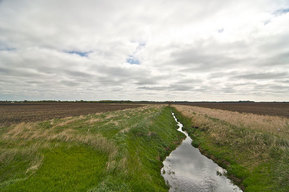 Early bird registration ends Sept. 9 for the Buffer Science and Design
Symposium Sept. 16 at the Northstar Ballroom, University of Minnesota, St. Paul campus. Researchers are invited to submit abstracts for poster presentations. Draft agenda, registration link, and abstract submission form are at http://www.wrc.umn.edu/bufferdesignsym
This one-day symposium will explore the
current science behind the design, effectiveness, and implementation of
riparian buffers. It will provide a scientific foundation to inform
future training, rules, implementation projects, and research. The primary
audience is researchers and students, and staff from government and private
organizations engaged in buffer-related activities. (Note this is not training
on Buffer Law policy and implementation.)
Plenary speakers:
- Tom
Isenhart, Iowa State University
- Gary
Bentrup, National Agroforestry Center
- James Stark,
US Geological Survey
See website for a complete list of
presenters: http://www.wrc.umn.edu/bufferdesignsym
Also plan on the Riparian Buffers Field Trip, Saturday Sept. 17. The
Dept. of Bioproducts and Biosystems Engineering and the Society for
Ecological Restoration-Midwest Great Lakes Chapter will lead a field trip
to look at stream restoration, buffers, and riparian management projects in the
area. Contact Chris Lenhart (lenh0010@umn.edu)
for more information.
Back to top
|
 The summer issue of the U of M Extension's "From Shore to Shore" newsletter
is now posted on the website to view or download. Articles include:
- Rain Gardens in Your Space - An Upcoming
Webinar
- Dam Replacement Project Allows Fish to
Migrate in and out of Cass Lake for the First Time in 100 Years via the
Mississippi River
- Disconnect: Dams and Other Barriers in
Minnesota's Streams and Rivers
- Fish and Insects as Indicators of Waters'
Impairment
Please feel free to share the newsletter with others; reproduce
articles for other newsletters (please credit "From Shore to Shore"
as the source); and submit shoreland and water quality articles, pictures of
projects, upcoming local events, and suggestions for topics for upcoming
issues. Contact Karen Terry, Extension Educator-Water Resource Team, University of Minnesota Extension Regional Office, Morris. 320-589-1711, e-mail: kterry@umn.edu.
Back to top
|
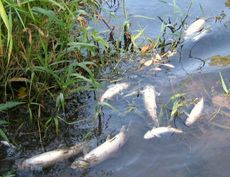 The University of Minnesota
estimates that about 500 fish kills occur in the state every year but few are
reported. Anglers and others who see multiple dead fish in one location should
report it to the Minnesota State Duty Officer
at 800-422-0798. This phone number for environmental and other emergencies is
staffed 24 hours 7 days week. (Call 911 for immediate threats to life and
property.)
Natural
causes of fish kills include:
- Low
oxygen levels due to natural stream conditions and other intrinsic factors
- High
water temperature
- Disease
- Winter
kill
Human causes of fish kills include:
- Low oxygen caused by human impacts
- Toxic spills
- Manure runoff
- Pesticides and fertilizers
- Wastewater or stormwater discharges high in
temperature
According
to the U of M study:
- Runoff, disease, and low oxygen are most common
causes
- Fish kills often occur when multiple factors happen
at same time
- Low oxygen will affect large bodied fish before small
bodied fish
- Fish kills involving few species are often caused by
disease
- Toxic pollution or discharges can cause death among
multiple species and sizes
- Very few fish kills result in total loss of fish
community
To
encourage more reporting of fish kills, the MPCA will distribute postcards
with the State Duty Officer phone number at Eco Experience during the
Minnesota State Fair.
Back to top
|
|